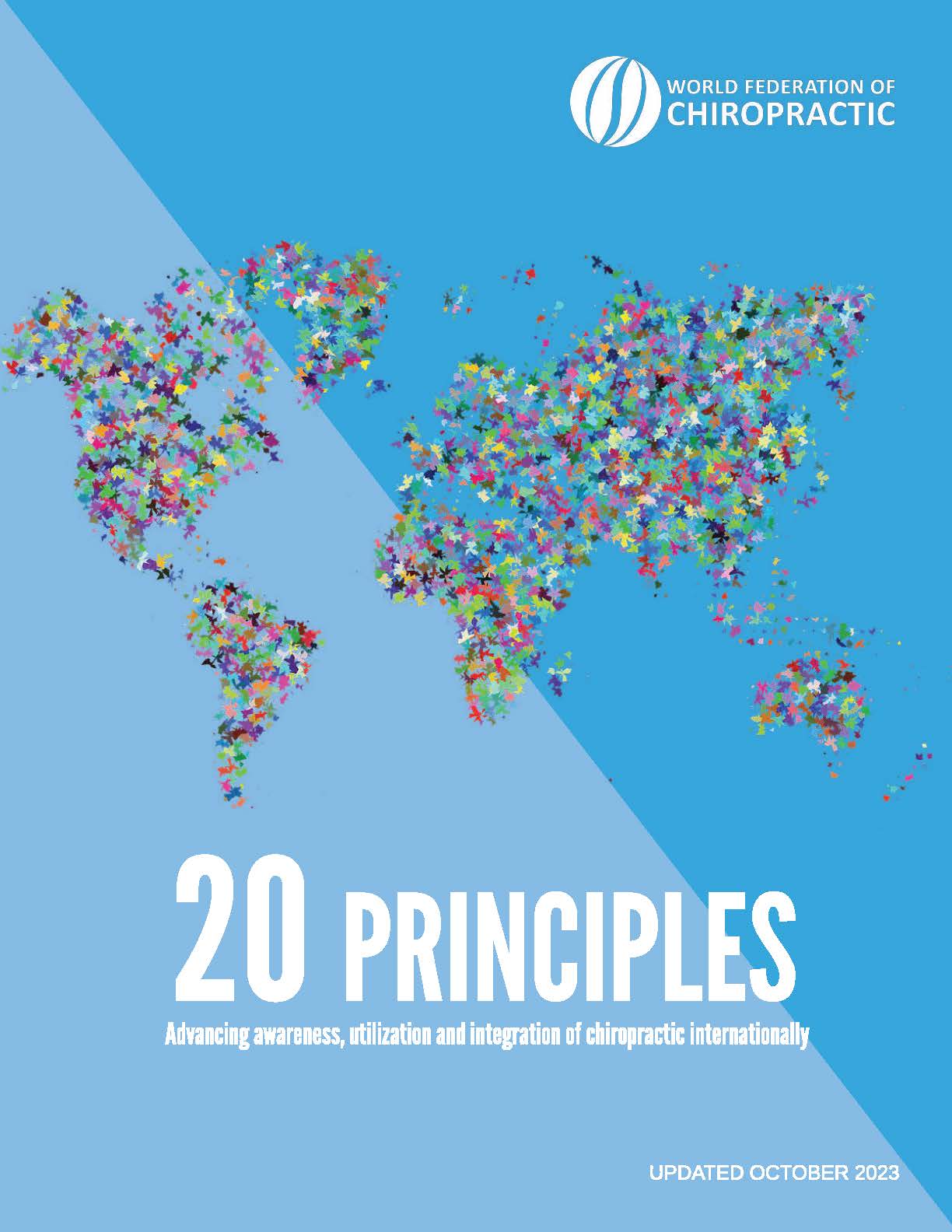History of Chiropractic
|
1895
|
In 1885, Daniel David Palmer originally began working as a healer in Davenport, Iowa. Over the next 10 years, based on his clinical observations, he developed a new approach to health care. He said that his new method began in September 1895, however he had not yet named its practice at that time.
|
|
1896
|
Reverend Samuel Weed, a patient of D.D. Palmer, combined the Greek words “cheiro” (hand) and “praktikos” (doing or action) to create the word chiropractic for Dr. Palmer’s new profession.
|
|
1897
|
The first chiropractic students entered the Palmer School and Cure (later to become the Palmer College of Chiropractic).
|
|
1898
|
The first chiropractic students graduate. This was a time when chiropractic was still emerging and was not yet recognized legally as a health profession.
|
|
1899
|
In Illinois, chiropractors were the first to become licensed under the state’s medical act that recognized all other health professions. The other states did not have an inclusive licensure policy.
|
|
1902
|
D.D. Palmer was accused of practicing medicine without a license in Los Angeles, California, USA. At that time, there was only 1 chiropractic school and only about 23 chiropractors in the world.
|
|
1904
|
Dr. Minora Paxton was the first chiropractor to be licensed and was listed as "other provider" in Illinois, USA.
|
|
1906
|
The Universal Chiropractors Association was created. Its primary purpose was to fight legal battles to protect chiropractors.
|
|
1907
|
The defense in the Wisconsin v. Morikubo case used a “separate and distinct” strategy. This lawsuit was the first to successfully defend a chiropractor for practicing without an osteopathic or medical license.
|
|
1910
|
D.D. Palmer’s son, B.J. Palmer, introduced radiography to chiropractic resulting in the Palmer School of Chiropractic being the first chiropractic program to teach the use of X-rays.
|
|
1913
|
Kansas became the first state in the U.S. to specifically recognize and license the practice of chiropractic.
|
|
1923
|
Alberta became the first province to license chiropractic practice in Canada.
|
|
1925
|
Ontario becomes the second province to license chiropractic practice in Canada.
|
|
1930
|
Only 60% of the states in the U.S. legally recognized chiropractic and there were only an estimated 14,000 chiropractors in the world.
|
|
1933
|
The Council of State Chiropractic Examining Boards in the U.S. (later to become the Federation of Chiropractic Licensing Boards) was established with a mandate to provide unified standards for licensure.
|
|
1939
|
The Canton of Zurich, Switzerland, became the first jurisdiction outside North America to license the practice of chiropractic.
|
|
1944
|
The Foundation for Chiropractic Education and Research (FCER) is established. |
|
1945
|
The National Chiropractic Insurance Company (which later became NCMIC) was chartered to provide legal defense services for chiropractors in the U.S.
|
|
1947
|
The National Chiropractic Association Council on Education was organized in the U.S
|
|
1950
|
The chiropractic profession continued to battle for recognition in Pennsylvania, New Jersey, Alabama, New York, Massachusetts, Mississippi, and Louisiana
|
|
1963
|
The National Board of Chiropractic Examiners (NBCE) was established in the U.S. to promote consistency and reciprocity between state examining boards.
|
|
1972
|
The U.S. Congress allowed authorizing payments for chiropractors through Medicare.
|
|
1974
|
The Council on Chiropractic Education (CCE) was recognized by the U.S. federal government as the accrediting agency for schools of chiropractic. This resulted in the development of affiliated agencies in Australasia, Canada, Europe and most recently Latin America. During this year, Louisiana became the last state in the U.S. to recognize and license the practice of chiropractic.
|
|
1976
|
The Wilk et al vs American Medical Association (AMA) et al lawsuit is filed. A group of chiropractors accused the AMA and other affiliated medical associations for violations of the Sherman Antitrust Act.
|
|
1978
|
The Journal of Manipulative and Physiological Therapeutics (JMPT) published its first issue.
|
|
1979
|
The New Zealand Commission of Inquiry into Chiropractic published the report Chiropractic in New Zealand. The Commission endorsed chiropractic services and called for medical cooperation.
|
|
1982
|
The JMPT became the first chiropractic journal to be included in Index Medicus in 1982.
|
|
1987
|
Judge Susan Getzendanner ruled in favor of the chiropractic plaintiffs in the Wilk vs American Medical Association lawsuit resulting in an injunction against the AMA. This allowed for cooperation between medical and chiropractic doctors in education, research, and practice in the U.S.
|
|
1988
|
World Federation of Chiropractic (WFC) was formed.
|
|
1990
|
The final appeal Wilk vs American Medical Association lawsuit was denied, thus the injunction against the AMA remained.
|
|
1991
|
The first WFC Biennial Conference was held in Toronto, Canada.
|
|
1992
|
Newfoundland is the last province to license chiropractic in Canada.
|
|
1993
|
The Manga Report in Canada, the first government-commissioned report by health economists looking at the cost-effectiveness of chiropractic services, recommends a primary role for chiropractors with back pain patients on grounds of safety, cost-effectiveness and patient preference, and concludes this will save hundreds of millions annually in direct health care costs and work disability payments. |
|
1993
|
The landmark article “A comparison of health care costs for chiropractic and medical patients” published by Miron Stano in the JMPT suggested “a significant cost-saving potential for users of chiropractic care.”
|
|
1994
|
Government-sponsored expert panels developed evidence-based guidelines for the management of patients with back pain in the U.S. (Agency for Health Care Policy and Research) and the U.K. (Clinical Standards Advisory Group). These panels provided the first authoritative reports that manipulation is an acceptable treatment approach for most acute low-back pain patients.
|
|
1995
|
Chiropractic was not yet available to U.S. military members. U.S. Congress directed the Department of Defense to test the feasibility of providing chiropractic services to military members through a demonstration project.
|
|
1996
|
The National Institutes of Health (U.S.) funded a conference series to develop chiropractic research. These meetings were the first of their kind.
|
|
1997
|
The WFC was admitted into official relations with the World Health Organization (WHO) as a non-governmental organization (NGO).
|
|
1998
|
This was the first year that there were more chiropractic schools outside (17) than in the U.S. (16).
|
|
1999
|
The U.S. Congress authorized the Veterans’ Administration healthcare system to begin providing chiropractic care to American Veterans.
|
|
2000
|
The chiropractic demonstration project within the Military Health System was a success. Chiropractic care was made a permanent benefit for US uniformed service members.
|
|
2005
|
WHO published the WHO Guidelines on Basic Training and Safety in Chiropractic, recommending educational standards for the recognition and regulation of chiropractic services in all member countries.
|
|
2008
|
The first World Spine Day was organized by the WFC in collaboration with organizations around the world.
|
|
2011
|
The first World Spine Day competition was organized by the WFC in collaboration with organizations around the world.
|
|
2017
|
The WFC performed a workforce study and estimated that there were approximately 104,000 chiropractors around the world.
|
|
2018
|
WFC launched a strategic plan 2019-2022 and began the WFC evidence-based, people-centered, interprofessional, collaborative campaign, known as the EPIC campaign.
|
|
2020
|
WFC issued statement that it stands in solidarity with World Health Organization in its role of promoting health for all and in protecting population health in all nations.
|
Featured Videos
Search
Click here to see complete Corporate Partners List












